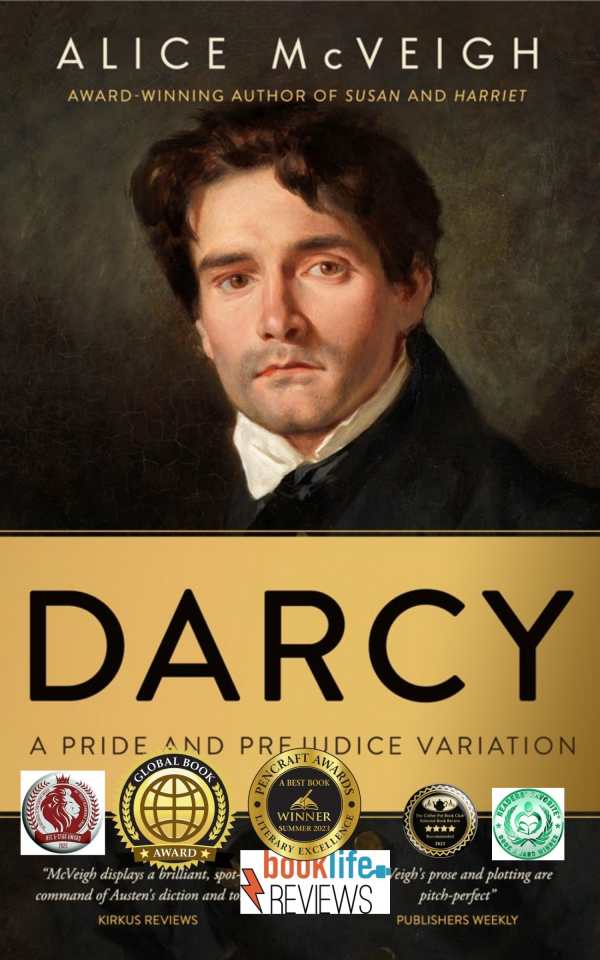Darcy
A Pride and Prejudice Variation
Darcy is a delightful take on Pride and Prejudice that shows respect for Jane Austen’s work while also peeking into her characters’ true thoughts.
Alice McVeigh’s Regency-era romance Darcy pays homage to Pride and Prejudice with its imaginative scenes and vivacious journal entries.
The novel doesn’t stray far from Jane Austen’s basic plot: in it, Mr. and Mrs. Bennet of Longbourn need husbands for their five daughters because the family estate is due to pass to a distant cousin—a man—upon Mr. Bennet’s death. Their comely eldest daughter, Jane, captures the eye of a wealthy neighbor, Charles Bingley, while whip-smart Elizabeth engages in a turbulent love-hate relationship with a brooding aristocrat, Mr. Darcy. When Elizabeth’s flighty younger sister comes close to ruin with a dashing army officer, Darcy swoops in to redeem himself and save the day. In the end, Elizabeth and Darcy overcome their “pride and prejudice” toward each other and discover they are a true love match.
While there have been multiple variations on Pride and Prejudice, this volume steers a unique course through the familiar material. Entries from Darcy’s diaries are used to afford a view of his backstory and suggest the emotions that pulse beneath his moody exterior. Indeed, this Darcy is plagued by memories of a torrid two-week romance with an Italian opera singer, an assignation that ends in a dreaded breach-of-promise suit. The addition of this subplot—although it has an abrupt end—adds texture to the iconic romantic figure whom Austen filtered through Elizabeth’s thoughts and perspective. An imagined confrontation between Darcy and his nemesis, Wickham, also satisfies.
In a similar way, Elizabeth’s studious younger sister, Mary, gets her say through her “private papers,” in which she coaches herself in ways to draw the attention of her love interest. Also included are excerpts from The Wisdom and Wit of Mary Bennet, the self-important girl’s work in progress. Still, although this perspective gives voice to a side character from the original work, it reads like filler, and Mary comes off as unaware of her own arrogance and lack of talent. In the end, she is no more rounded or interesting than she is in Austen’s text.
At its best and most clever, the narrative is infused with a dry twenty-first-century sensibility that respects Austen while also peeking into her characters’ true thoughts. Elizabeth, for example, points out Jane’s “annoyingly obedient hair.” Darcy notes that Mrs. Bennet “appeared to have not the slightest objection to parting with [Jane]—for months, if need be.” And while scheming to attract Darcy, Caroline Bingley complains that he “has no moods! He is always the same!” Still, while the prose ably captures Austen’s tone throughout, some of its dialogue is also taken almost verbatim from the original text, as with a scene wherein Lady Catherine questions Elizabeth about her lack of a governess and education.
Darcy is an often delightful deep dive into what the characters of Pride and Prejudice were thinking but not saying.
Reviewed by
Paula Martinac
Disclosure: This article is not an endorsement, but a review. The publisher of this book provided free copies of the book and paid a small fee to have their book reviewed by a professional reviewer. Foreword Reviews and Clarion Reviews make no guarantee that the publisher will receive a positive review. Foreword Magazine, Inc. is disclosing this in accordance with the Federal Trade Commission’s 16 CFR, Part 255.

